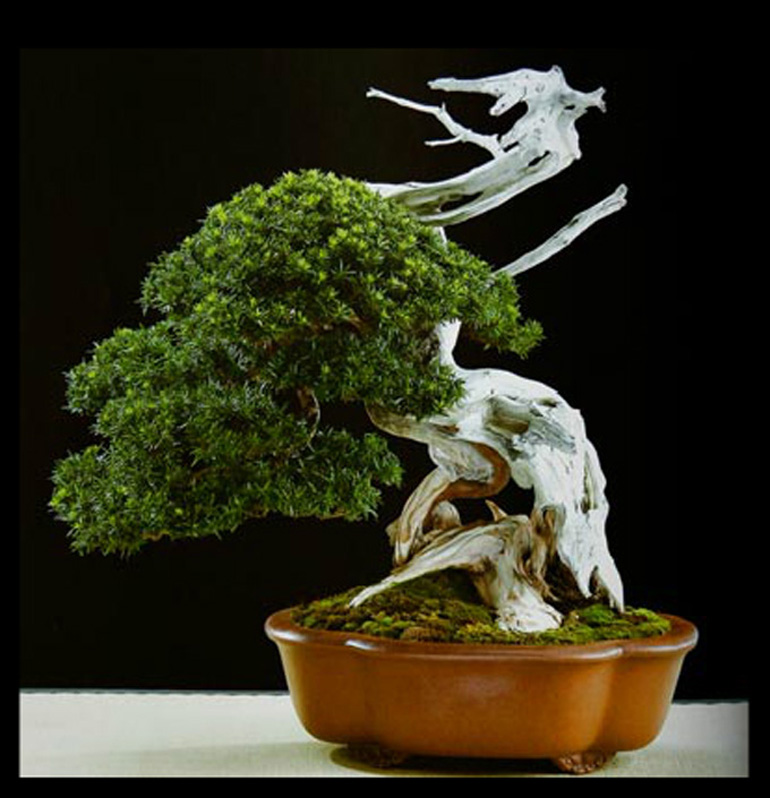
We’ve shown this Japanese yew by Marco Invernizzi before, but a bonsai this good is always worth another look.
I’ve been wanting to publish this interview with Marco Invernizzi every since I first saw it at Bonsai Prelude a couple months ago, but have been waiting on our next batch of Marco’s (and Masakuni’s) famous Ichiban all purpose bonsai tool. They arrived the other day (better late…) so the time is ripe (not that any time wouldn’t be ripe for the interview, just that we’re in this for love AND money).
The interview was conducted by Dylan Fawcett. I don’t know too much about Dylan but I do know that he is a ceramic artist, bonsai aficionato, serious bonsai blogger and friend of Bonsai Bark (*see below).
We’ll start with Dylan’s opening comments (we’ll make Dylan bold and Marco italic):
So to start out with, a “grazie mille!” to Marco for taking the time to answer a few of my questions and diligently run over a couple drafts to provide the most complete answers possible!
As I mentioned earlier, out of my own ignorance, narrowing my bonsai knowledge to the blog-space, Marco seemed to have slipped past my radar. When I met him at the Rendezvous (Brussel’s famous annual bonsai event) a couple weekends back, I couldn’t help but think “damn, this guy knows whats up.” And after listening to his demonstrations and work shops all weekend I can see why he’s truly a gift to bonsai in the West (as well as the rest of the world). Having been through an apprentice-type learning environment myself (in the world of fine dining) I can’t help but respect his constant drive for self improvement. We could all learn a little bit from Marco, even if it doesn’t involve bonsai.
~Hope you enjoy!
How did you get started with bonsai?
As a teenager I always had to keep myself very busy with lots of different things because I was barely spending time with my parents and I don’t have siblings. A moment came when I was 14 and my family asked me to give up every extra school activity that would require a financial commitment on their side….so I was basically left with only freestyle skating, which didn’t really cost much except a few packs of Band-Aid® here and there. So I found myself starving for something to rock my world and change my life and that’s when I saw Karate Kid 3 on tv and immediately realized that first of all, I would never hurt anyone with martial arts, but I definitely wanted to learn everything about bonsai. At that time Milan was one of the most active cities outside Asia for bonsai. More than 5 nurseries were in business and the interest for the art was raising and I rode the wave of the general enthusiasm…..
How did you decide/ how did you come to the opportunity of working with bonsai in Japan?
Now that I’m almost 40 I find myself content just doing something new without getting really deep in it, but back when I was younger I just wanted to become the best in everything I was doing. When I decided that I wanted to learn bonsai I immediately wanted to find out everything about it and I realized that the only way to really learn bonsai was to go to Japan. I was the best student of my class in college, I was the most decorated boy scout of my group and so on. I grew up with the idea that I could only count on myself and the tenacity of my desire to find out everything about what I was truly passionate about.
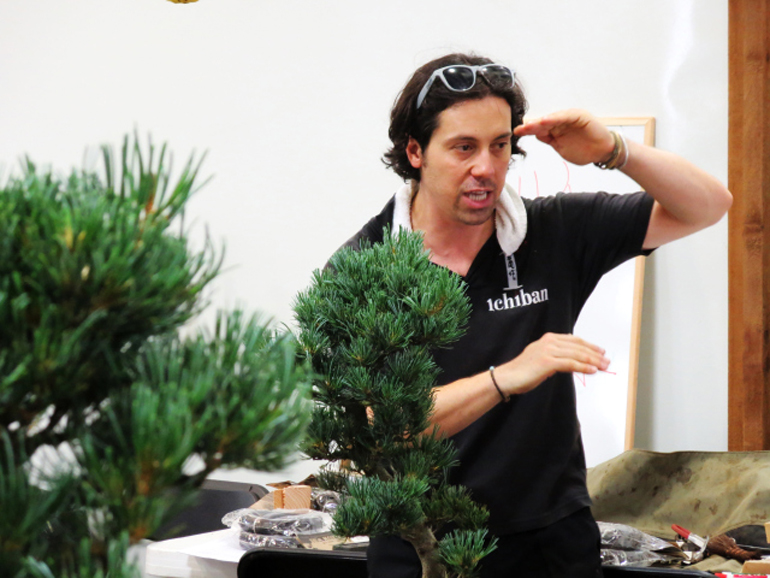
Dylan’s caption says “Marco compacting an “air-bonsai” in his White Pine workshop” (at Brussel’s Redevous).
How did you decide who you wanted to apprentice under?
During my first bonsai lesson my Italian teacher, Salvatore Liporace, introduced me right away to the art of Masahiko Kimura . I clearly remember it as if it were yesterday, I realized right away that Kimura was someone ahead of everyone else…..( and 23 years later he still is )…..I spent the next 5 years in Italy working hard to be ready to create the opportunity to study directly with him. My Master (Kimura) was obviously quite skeptical about accepting a non-Japanese disciple in his garden for the first time, and to this very day I would say that he was right. It’s hard to imagine 2 ways of thinking that are farther apart, than the traditional Japanese and the modern Italian mentality…..but I guess he was quite impressed with my determination. I wouldn’t have taken “no” for an answer.
What was the most challenging thing you had to do during your apprenticeship or bonsai career in general?
As a disciple, the most challenging thing to do is to stay day after day. I guess it’s like getting married! It’s easy to say yes in Vegas when you are drunk but it’s hard to love the same person for 30-40 years. A disciple who never gives up is the best disciple. After more than 3 years I gave up so I guess I haven’t really been a good one. I was young and I made my mistakes (My Way is playing in the background )…….But this year I’m going back to study with my Master for the first time after 2001 because after 14 years of professional bonsai the only thing I want to do is to learn more.The best thing in bonsai is having the opportunity to learn new things every day. All the rest is worthless.
As a bonsai master, the most challenging thing is to find someone who will admit their mistakes. No one will ever say that they actually killed a tree or that they don’t know how to wire. So I guess that dealing with my customers’ ego is the most difficult task of my professional life.
What was the most rewarding experience you’ve had so far?
Some may think that being the most awarded bonsai artist in Europe could do it, or the fact that I work for the best bonsai collectors in the west. Someone else may say that I gave a main contribution to the evolution of contemporary bonsai in the west, that I helped the very first non-Japanese bonsai enthusiast to win Kokufu or that I created the first and only truly new bonsai tool in bonsai history. To me the most rewarding thing about my bonsai experience is that I made my dreams come true and that made me a free man… and I made my family proud of me! Grandma Luisa is my #1 fan!
What is your favorite species? Either to work with or just to view?
Larch
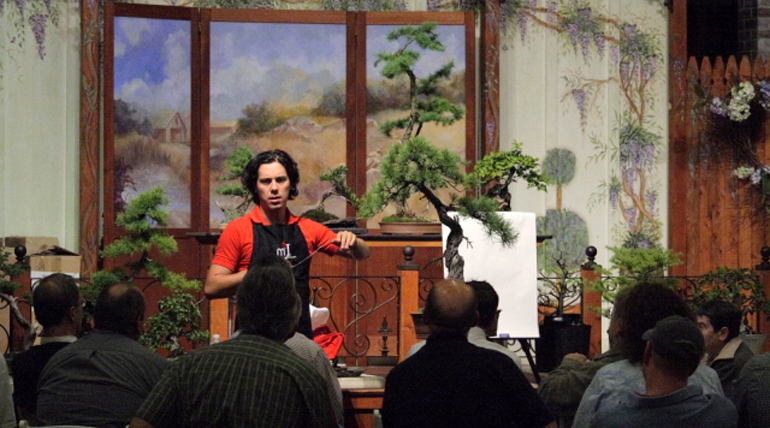
Marco critiquing a Nick Lenz Pitch pine at Brussel’s Rendevous. This seems like a good spot to insert this photo: Marco has just mentioned that his favorite tree is Larch and Nick Lenz is sometimes known by friends and fans as ‘Larch Master Lenz.’
Is there a species you dislike?
All the species that have no potential to become bonsai. Too often I see greed or national pride blinding lots of people’s judgment, so they sell trees that have no potential to become bonsai. They lie to their customers so they can make money. But ladies and gentleman…trees don’t lie! Bonsai is already a very difficult thing to do and I would recommend that everyone dedicate their efforts to the very best possible material they can work on. Every day I see lots of bonsai enthusiasts who want to take up the challenge to make a bonsai tree out of a species that has never been made into a bonsai before. All just for the sake of saying that they did it. Well… it’s like a chef who picked up the worst ingredients to prove the point that he can make something tasty out of it anyway. In a few years time the people who invested wisely will have bonsai, the others will just have sad excuses….
So larch is my favorite specie right? Would I ever sell a larch to someone who lives in Atlanta, in Rio de Janeiro or in Sicily? or would I ever sell a larch with flat bark saying that the bark will age and get rough within just a couple of years. The answer is no.
To be honest, the first time I saw your Ichiban Tool, I was a little skeptical. It was just so different than anything you typically see with other bonsai tools. Then when I saw you using it at Brussel’s, it all just clicked. I thought to myself “holy crap, it really is one tool for everything.” I mean you were cutting wire, ¾” branches, trimming upside-down, it was ridiculous! Could you talk a little bit about designing the product.
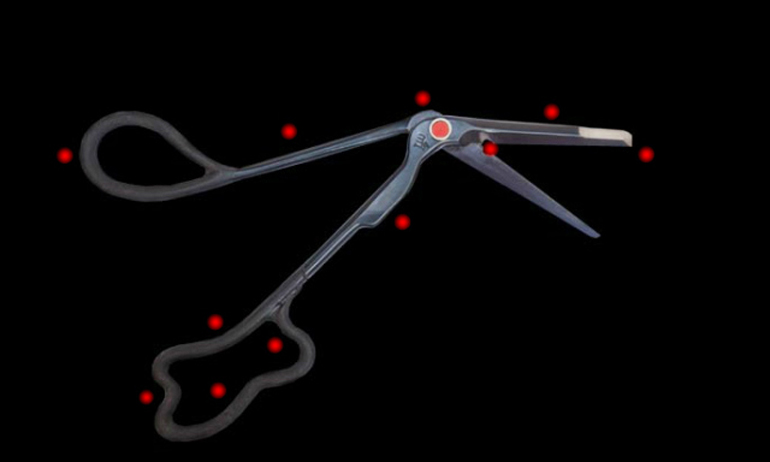
Marco’s now famous Ichiban, all purpose bonsai tool. Here’s our original post about the Ichiban and here and here are a couple others.
Before I started to work with my Master, I got a Phd in Design and every day I apply what I learned in college to the bonsai I work on. I actually would have become a full time designer if I hadn’t gotten into bonsai. After using the same traditional bonsai tools for more than decade I realized that they weren’t really ergonomical, only functional. I remember sketching new ideas and designs on napkins, plane tickets or blank corners of inflight magazines. I had to improve the basic bonsai tools I was using every day. It took me almost 3 years but in the summer of 2009 I launched ICHIBAN worldwide and since then I never stop researching new ways to improve it and serve the bonsai enthusiasts of the entire world.
Even though lots of my colleagues won’t use ICHIBAN mostly because they didn’t design it, the main goal of this revolutionary tool is to make it easier for everyone to work on bonsai. Franco from Florida lost the use of 2 fingers in his hand but with ICHIBAN he can still work on his trees because the handle can be held even with only 3 fingers. Jerry from California cannot stand up in front of a tree for more than 10 seconds at a time: his legs won’t support his weight. Now he sits in front of his trees and without raising his elbow, ICHIBAN allows him to prune the top part of his big trees without getting out of the chair. Linda from Christchurch, NZ has degenerative joint disease so she cannot move her fingers very well but when she holds ICHIBAN in her hand she has to move only her thumb making her work on bonsai way easier and enjoyable.
So every time ICHIBAN helps someone spend more time with their trees I know that I archived my goal as a designer.
Do you have any future plans for other demonstrations or workshops in the U.S.?
I just got a Green Card so I guess you’ll see lots of me in the future….but bonsai organizations always want to see new faces, it doesn’t matter how good they are. A guy is having his mid-life crisis and instead of buying an Harley or dating a stripper he decides to become a bonsai master and he gets hired. Sad.
But at least now USA has the highest concentration of Japanese trained bonsai professionals, which can bring only good to the scene.
Is there something or maybe a few typical things that you find people in general have the wrong instruction on?
Most of them haven’t the curiosity to search for the truth or the humbleness to see the huge mistakes they make.
Are there any particularly helpful techniques that you think most people outside of Japan don’t practice, but would be especially beneficial?
In my own country the fine art of killing bonsai is brought to a whole new level. In Spain, where we can find the highest bonsai level outside Asia, there is a lack of patience and dedication into preparing the amazing rough materials they can find on their mountains. In many other countries still the concept that “a tree in a pot is not a bonsai” is not well understood. In USA I rarely meet someone who likes to wire a tree from start to finish. Ryan is right! Too many people are concerned with design issues when they can barely keep a tree alive. Too many people are spending too much time on Facebook instead of working on their trees and 95% of the bonsai enthusiasts seem to aim more for the high quantity of the bonsai in their collection than for the high quality of their trees.
Is there anything about yourself or bonsai in general we haven’t touched on that you’d like to talk about?
3 years ago I opened and funded an elementary school for nomad kids from Ladakh, India. I’m proud to announce that right now me and my team are currently working on delivering a new school tent and two 4x4s full of supplies for the kids and their families. The name of the school is “The Running Noses School” and if someone is interested in finding out more about this project and maybe becoming an active donor…please get in touch with me at marco@marcoinvernizzi.com
Thanks again Marco for the great responses!
*As a little bonus, here’s what Dylan has to say about us on his Bonsai Prelude.
Bonsai Bark is a blog written by the people who run Stone Lantern. Stone Lantern is a distributor of tons of great bonsai supplies, and the only place to find a few varieties of tools. It always makes me feel confident buying bonsai merchandise from Stone Lantern, knowing that the people behind it are as passionate about bonsai as I am. You will be hard pressed to find a blog that has as many varied and thorough sources as Bonsai Bark. If you spend even a small amount of time on their blog, you’ll be exposed to photos of some of the greatest bonsai by masters all over the world. I’m constantly coming across referenced material that I likely wouldn’t find else where.
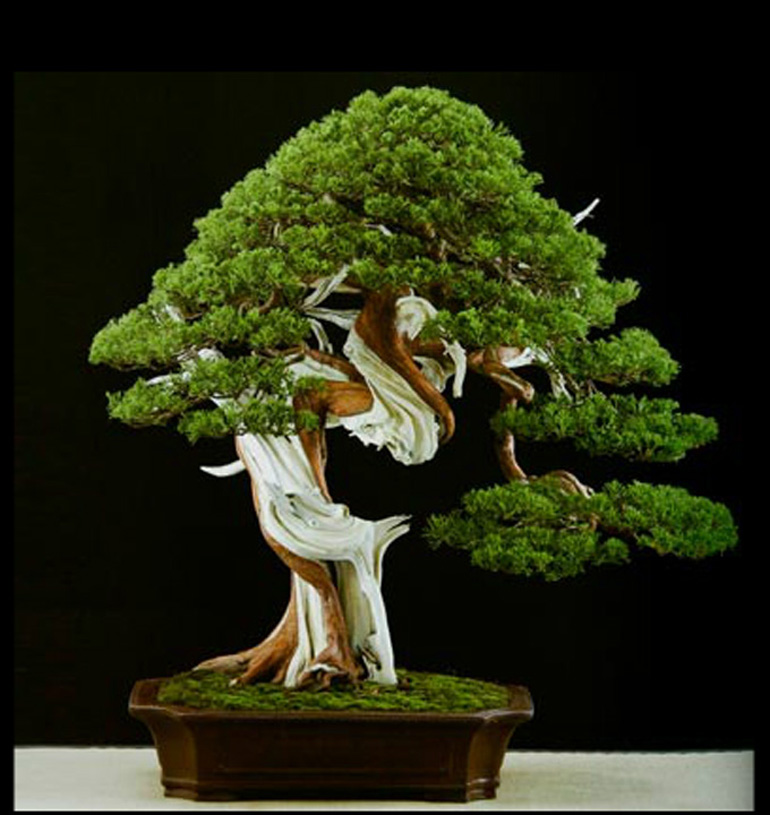 We’ve shown this Juniper by Marco before, but it’s worth another look.
We’ve shown this Juniper by Marco before, but it’s worth another look.
Thanks to Dylan at Bonsai Prelude for conducting this interview. And of course, thanks to Marco for sharing his thoughts and bonsai experience.